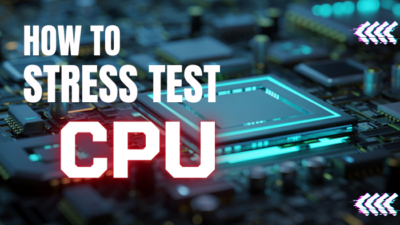The processor on Mac utilizes a very little portion of its capacity while doing any regular task. Dealing with high-end functions that require more calculations and multitasking can result in mouse glitching, rainbow wheels, and lags.
This can occur because of the high percentage of processor utilization. In such situations, you should check your CPU usage to know the reason and find a solution.
Let us go through the process of checking your processor utilization over Mac. Here, I will also describe the facts that numb your computer down and swells your CPU exertion.
How to Tell if Your Mac is Overusing CPU
It feels quite frustrating when you frequently face sudden lags while running any major application. These lags can worsen, and you may face system errors due to the high utilization of the processor.
Speaking of CPU utilization, here’s our extended discussion on whether a CPU can run at 100% usage or not.
Knowing current CPU utilization was very mesmerizing for me when I learned how to check it for the first time. I remember opening Activity Monitor on my Mac, and I was checking how much of the capacity I was using. There were options where I can navigate all the running applications, and I also disabled some of those to increase my processor utility.
If you have just moved on to Mac, you must know this Activity monitor is similar to Task manager. Let me navigate you to the section in Activity monitor where you can observe and control your Processor utilization.
Here are the steps to check your CPU on Mac:
- Navigate to Spotlight Search in the top right corner of your desktop.
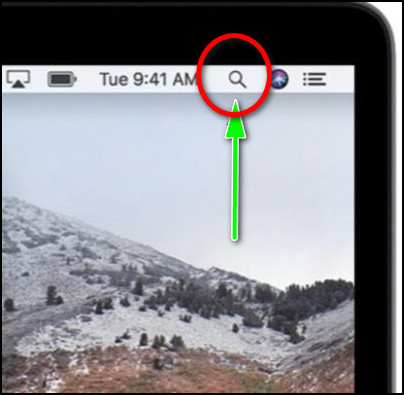
- Type Activity Monitor.
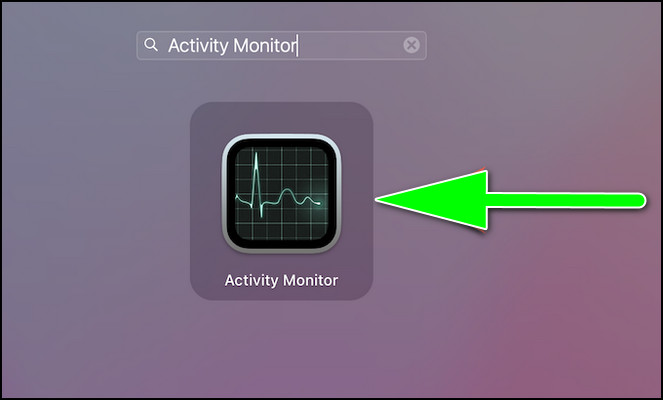
- Click on the result.
- Tap on the % CPU section to see processor usage.
The percentage of how much the processor is using its capacity will show at the bottom of the Activity Monitor.
Analyze ‘Activity Monitor’ for CPU Usage on Mac
There are some specific sections from where you can analyze the condition and details of the Processor in the Activity monitor. There are sections including a line graph and specified CPU indications with three specified steps; System, User, and Idle.
Here are the descriptions of CPU condition-Indicators found in the Activity Monitor :
● System
The macOS has some programs associated with it. While running any application, a portion of the CPU utilizes the programs of macOS. Here you will notice the percentage of the CPU that is being used by programs associated with macOS.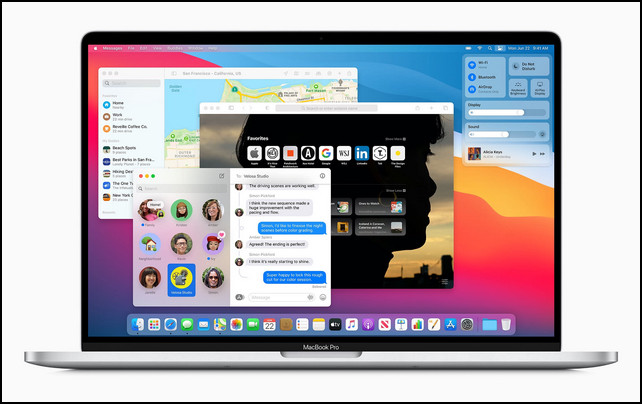
● User
Whenever you open an application, your processor utilizes a certain portion of the CPU capacity. If you are running several applications at the same time, your CPU usage will be high.
So this section will stream the updated percentage of CPU used for the launched programs.
● Idle
This portion shows the extracted percentage of user+ system usage. That means it shows the portion of usable CPU that is left. So the capacity of this section indicates usable CPU.
If the system and user section are using a percentage close to the total CPU, you may experience poor computer performance.
● Line Graph
The statistics at the bottom of the Activity Monitor will continue to reflect all the processes running on your system. This live line graph will indicate the current usage of the Processor by showing a running line that has several stages.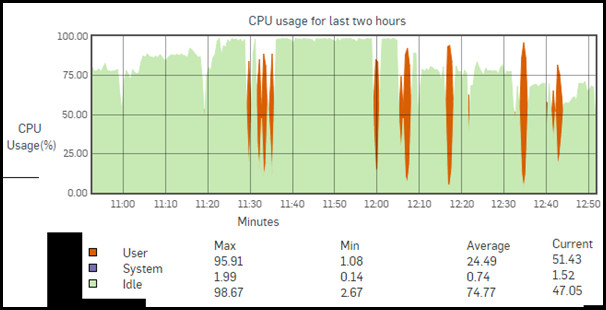
Sudden spikes are visible when you open any application or tabs on browsers. And running any high-end software like photoshop, illustrator, architecture, or medical apps will continue to reach a high rate of CPU.
If you do not have an SSD card, you will experience low performance in the utilization of the processor. For better performance, you should buy a suitable SSD for your system.
The third section on the bottom part of the Activity Monitor shows two subjects; threads, and processes.
● Threads
Within a program, a thread is a single sequential flow of control. A single sequential thread is not what really excites people about threads. Instead, it refers to the employment of numerous threads operating concurrently and carrying out various activities inside a single program. Which influences CPU usage.
The number of threads in one application indicates the number of ways the application is pressuring the CPU to process. The total number can tell you the condition of your processor’s pressure.
● Apps Processes
This part indicates the number of applications that are being processed at the same time. Too many applications can use a lion’s share of the CPU. The bar on the top of the activity manager shows the Process name, scrolling this section will provide you access to all the applications that are in process.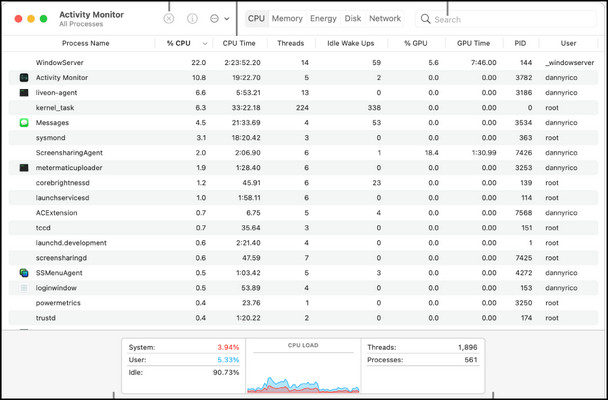
You can disable any application or program if you want. There are different system activity monitors, system files, and programs that can be disabled for the sake of better performance.
On a side note, check out how to boot Mac from an external SSD.
Tips for a Better Utilization of Processor
I used some easy tricks to lessen my CPU usage for everyday usages, like disabling startup tasks, extracting carnal tasks like too many plugged-in devices, and cleaning the internal structure like the cooling fan.
Here are some tips to ensure better utilization of processor:
- Fan issues with MacBook pros for example, If your fan not working properly, your computer is overheating. Causing more strain on your CPU. So cleaning the cooling fan can help in better CPU utilization.
- In the case of Laptops make sure the adapters are plugged in, that seems not helping, but it does with the proper CPU utilization.
- The carnal task uses much of the CPU when a lot of things are plugged into your device for a long time. These plugged-in devices are called Carnal tasks which are the Webcam, your external mic, your ring light, etc.
- Updating the windows also helps to optimize the CPU. It automatically fixes most of the issues, with also resetting CPU usage.
- You can also disable windows and other unnecessary applications that are using most percentages of your processor.
- Disabling some startup programs will also help to reduce CPU utilization for your Mac.
You just have to know the right things to do when you face problems caused by high CPU usage. For example, go through this article to know how to fix kernel task high CPU usage on your Mac.
Similarly, check out how to fix Malwarebytes’ high CPU usage issue on Mac.
After fixing or taking any action to ensure better health of your Processor, each time you can check the CPU by Activity Monitor.
FAQs
How do I lower CPU usage on my Mac?
To decrease CPU usage and improve your Mac’s performance, remove startup programs, disable animated desktops, and delete any widgets you don’t use.
How Do I Check CPU and GPU Usage on Mac?
Open Spotlight Search and type Activity Monitor > Select Activity Monitor from the search results > If the CPU tab isn’t selected > Click % CPU >
The overall CPU load is shown at the bottom.
How do I free up CPU usage on Mac?
Update your Mac > Check your top CPU consumers applications > Reset your SMC > Remove unnecessary login items > Declutter your Desktop > Free up RAM > Disable Carnal tasks.
Where can I see CPU usage?
Click on the Spotlight Search in the top right corner of your desktop > Type Activity Monitor > Click on the result > Tap on the % CPU section to see processor usage.
Wrap up
CPU is like the brain power of your computer, it is a very common issue for Mac users to face high CPU usage. They can always put an eye on the current health and the properties the CPU is using by analyzing the Activity monitor.
The section of % CPU in the Activity Monitor displays the percentage used by the system and user. It also indicates how many and what applications are running in the foreground and background. If you have any other things to know or if you have any questions, let us know through your comments.

